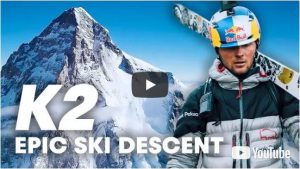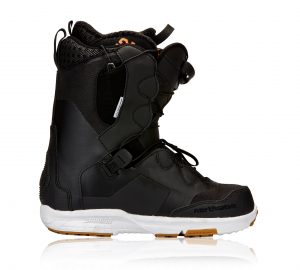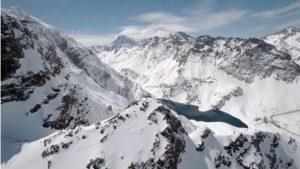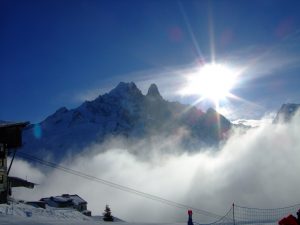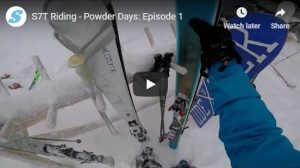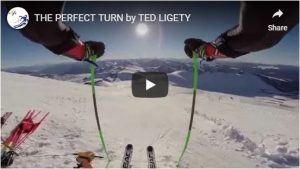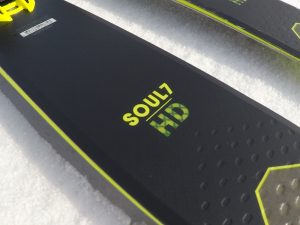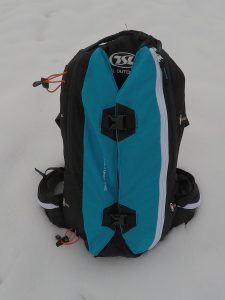This month, my ski tutorial covers counter-rotation. What is counter-rotation and when do we need it?
Counter-rotation should be evident in almost every ski turn to varying degrees. The only time I would not expect to see counter is in a very basic wedge turn, or in children that have not developed fine motor skills yet. So what is counter-rotation? According to the PSIA (Professional Ski Instructors of America), “counter-rotation describes the movement when the upper body turns in one direction as the lower body (legs) turn in the opposite direction”.
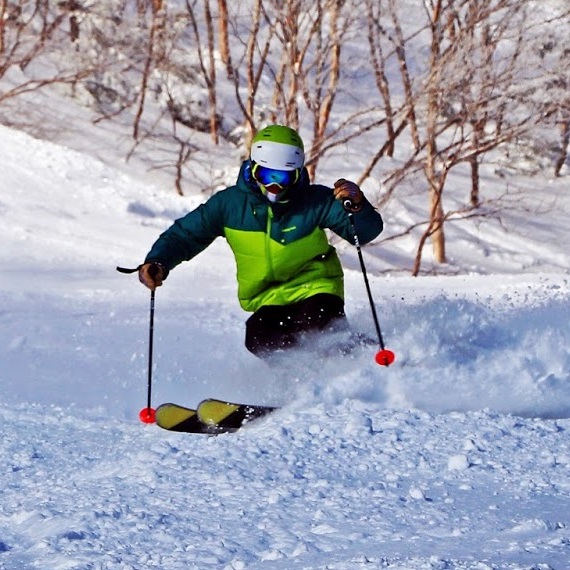 Out on the hill, counter-rotation is observed when you see the legs turn across the hill towards the end of a turn and the upper body stays focused facing more down the hill. This is also known as turning the feet and legs against a stable upper body. Counter-rotation is greatest during the transition between turns and smallest in the fall line (when the skis run straight down the hill).
Out on the hill, counter-rotation is observed when you see the legs turn across the hill towards the end of a turn and the upper body stays focused facing more down the hill. This is also known as turning the feet and legs against a stable upper body. Counter-rotation is greatest during the transition between turns and smallest in the fall line (when the skis run straight down the hill).
Being in a countered position is not the same as counter-rotation. I can ‘counter’ by standing stationary with my skis across the fall line and turning my upper body to face down the hill. This only shows a snapshot in time, though, and is not an accurate representation of real skiing. Counter-rotation requires motion, i.e. you ski into and out of a countered position.
During skiing, we should aim to generate more counter-rotation as the radius of the turn gets smaller. When we turn the legs quickly against the upper body (like a tight radius turn) we coil the body like a spring which creates energy that is stored in our core. To start the new turn we release this stored energy to quickly turn the legs in the opposite direction. Have you ever noticed how a medium or large radius turn does not have as much counter? This is because we are not creating the same amount of [rotational] energy that we do in a tight radius turn, so the body can’t coil as much like a spring. If we don’t create counter during a tight radius turn, the turns lack rhythm and the skier has to make additional movements to turn the skis quickly. This usually requires rotating the upper body to start the turn.
I like to teach counter-rotation at a very early stage. By teaching my beginner students to make a wedge turn by rotating their legs, I’m already teaching them counter-rotation passively. When my students are skiing parallel, counter-rotation can be honed with a purposeful pole plant and the notion of moving the centre of mass (CoM) towards the apex of the next turn. With advanced skiers, pivot slips are great for teaching quick rotation of the legs and feet under a stable upper body when preparing for tight radius turns, or skiing bumps.
DR


